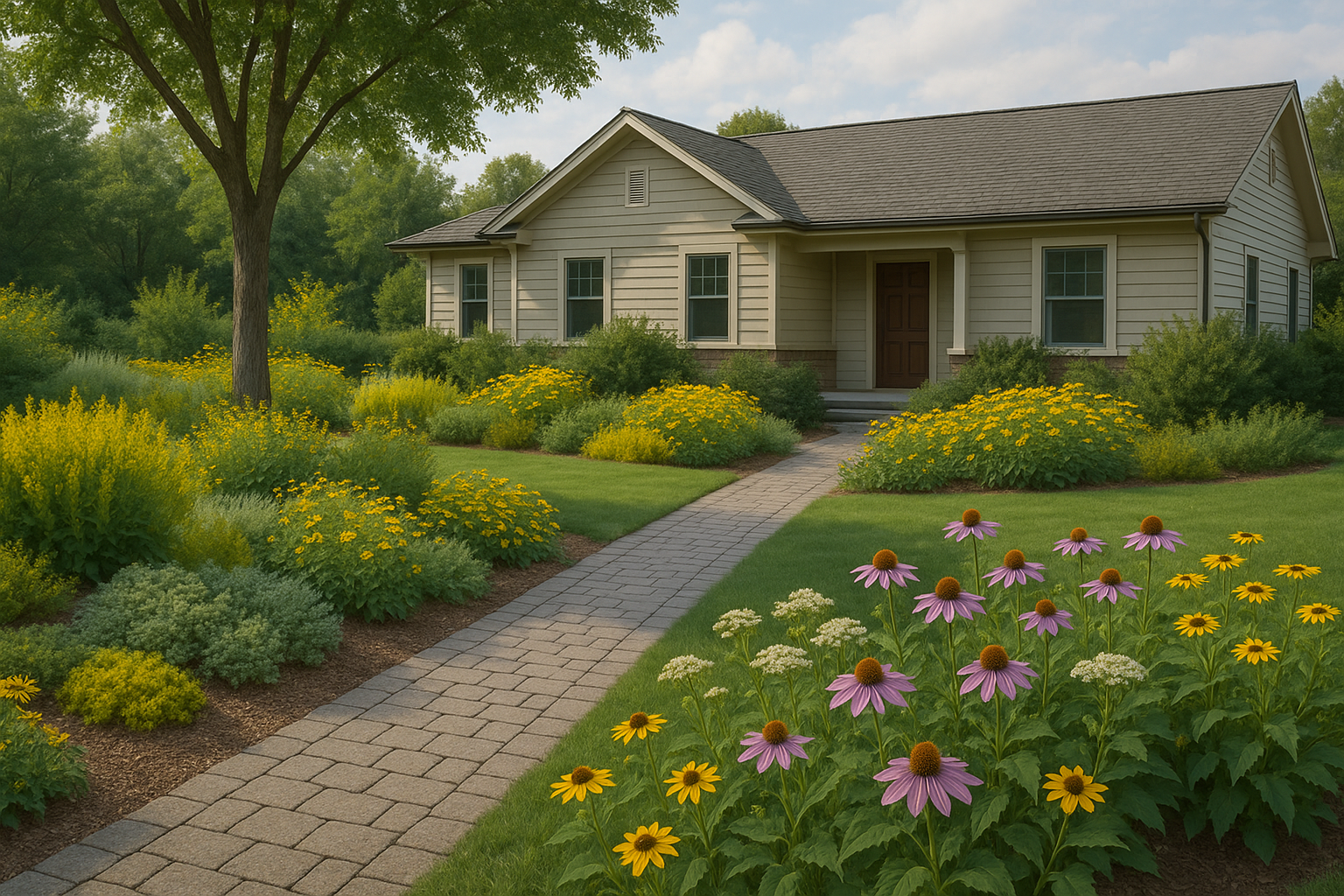
I have noticed lately that no matter where I go, the landscaping seems to look the same. A field of
grass bordered by a hedge, or fence, with a straight sidewalk leading to the door. Sometimes a tree.
will cast a gentle shadow over the yard. Homogenized, standardized and in a word, boring. In the
United States, we have 26 hardiness zones according to the USDA. That translates to a minimum of
26 different styles for your landscape, and hundreds of plant combinations. Due to popular demand,
speed of installation and price, we are often prone to let our gardeners or landscapers make the
choices for our plants. In general this makes a lot of sense, they are going to maintain them, why not
let them select and plant them as well. What is happening though is that the plants are becoming
hybridized and ornamental. These ornamental plants are often barren of flowers, which means no
pollen or nectar for birds and insects. You might as well have a slab of concrete on your lawn. The
concept of the Garden of Even is to plant and nurture a garden which creates its own ecosystem. To
create a Garden of Even you will need to design how you want the garden to grow, find Native plants,
and group them into companion clumps.
Landscape design is a very intricate art. It takes years of study and should require an internship to
become an expert. To begin your Garden of Even, you don’t need a landscape designer of architect,
but you can certainly hire one if you want. Start small, if you have a border or space that you would
like to enhance, decide what height you want for your plants in that space. You can plan for trees ,
tall shrubs, medium shrubs, flowers, or ground cover. Once you have that selected, decide if you
want something groomed like a hedge, or something natural like a bush find something you like, and
fits into the soil and sun for that spot. Try to fill all the height levels from top to bottom. In nature
plants grow where their seeds fall, and they can find all the nutrients and sunlight that they need. In
our yards, we often decide where plants will grow without planning for their specific requirements.
We also like to plant things by themselves so that they stand out, often they look missplaced and
unhealthy
Native plants are plants that are found naturally in a geographic region. Some have been there for
centuries and others have been brought in recent years, but are considered native now. Native
typically means they can handle the soil, sun, and weather of your area. Native plants are also non-
invasive, invasive plants arrived through unnatural means, and compete with natives, often pushing
them out of their habitats. Planting natives requires less chemicals. Some Natives are unruly by their
nature fighting for sun in the wild, when you plan their placement and surroundings they can grow
more as you decide. Some plants can be planted along a sidewalk or driveway and trimmed into
clean straight hedge, while others can be given some shape, but rounded, not rectangular. The
amount of literature and information about native plants is impressive, so finding something that you
like will be easy. Not fall off a log easy, but easier than getting a degree.
Select some companion plants to fill the gaps under your shrub or tree, and finally some ground
cover. All these plants should work symbiotically, sharing the same space and even if possible
benefiting each other by filling each others nutrient requirements. For instance nitrogen is fixed into
the soil by several plants like peanuts, beans, and alfalfa. These enrich your soil and help plants that
require nitrogen like flowering plants. Surprisingly there are a lot of ground covers which add
nutrients to the soil instead of requiring the addition of chemical like grass. If you don’t have farm
animals or a croquet court, you really don’t need a grass lawn. Leave grass to the parks and sports
fields. Exchanging ground cover for grass will also reduce the noise and air pollution caused by
lawnmowers, weed eaters and leaf blowers.
There is a lot of press about how we are losing bees and other pollenators, to pesticides and farming,
planting a garden of even can create a small island for native creatures to feed and rest. You can lay
out your landscape as you would layout furniture in the living room. The difference between what
we have been doing, and planting a garden of even is that the resulting landscape will bring your
surrounding alive with birds, butterflies, and other woodland creatures. Plant it and forget it, your
native space should require very little from you. If you want a cleaner looking space you and trim to
your satisfaction. The size and expanse of your space is up to you, but if you follow these simple
guidelines, your peace of mind and enjoyment should grow along with your plants.

